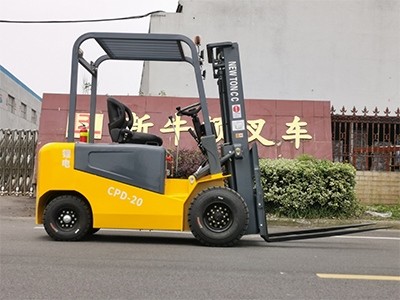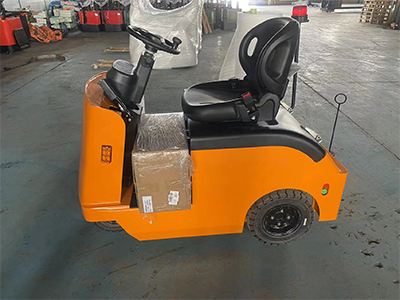Other maintenance of electric forklifts and tractors

(1) Maintenance of Electric Forklifts and Tractors during the Initial Running Period
The running in of new vehicles and vehicles after major repairs within the specified operating time is called vehicle running in. The characteristics of vehicle running-in period work are: the machined surface of the parts is relatively rough, the surface friction of each mating part is severe, there are more worn metal pins, the fit gap changes quickly, coupled with poor lubrication efficiency, and fasteners are easy to loosen. If adjustment is not made in a timely manner and running-in measures are taken, it will seriously affect the service life and working performance. Therefore, it is necessary to use and maintain forklifts and tractors in accordance with the regulations for their initial operation.
Regulations on the running-in period of vehicles: If the mechanical manufacturing factory has rules on the running-in period (initial driving), the original factory regulations should be followed. Without rules, the running-in period is generally set at 50 hours. The specific maintenance content during the initial driving (break-in period):
1. Clean the entire vehicle;
2. Check and tighten the bolts, nuts, pipeline joints, clamps, and safety locking devices on the exterior of all vehicle assemblies;
3. Check the tire pressure, wheel bearing tightness, and lubrication;
4. Electric forklifts and tractors. Clean the gearbox, drive axle, steering system, and hydraulic system of the working device, replace lubricating oil and hydraulic oil, and clean the filter screens of each oil tank;
5. Check the effectiveness of the steering system and the connection of various components;
6. Check and adjust the free stroke of the brake pedal and the stroke of the manual control lever, and check the braking efficiency;
7. Check the working efficiency of the working device;
8. Check the sealing and leakage of the lifting cylinder, tilt cylinder, steering cylinder, multi-way directional valve, and oil pump;
9. Check the height, specific gravity, and load voltage of the battery electrolyte level; 10. Check the working performance of the control device and lubricate all lubrication points on the vehicle.

(2) Sealing of Electric Forklifts and Tractors
1. Basic principles of sealing: The sealing of logistics handling machinery is carried out on the premise of meeting the requirements for use. The following principles should be followed: D adjust first, then seal, and use old to seal new, in order to facilitate urgent needs@ The sealed machinery should have been out of the factory for less than five years and have not been used for two consecutive years.
2. Requirements for Sealing D: Sealing machinery shall be stored in a centralized and decentralized manner, with management units and personnel implemented and registered for account establishment@ Battery forklifts and tractors should remove the battery for storage. The removed battery should be charged and discharged according to regulations and adjusted for use as much as possible;
3. During mechanical sealing, maintenance should be carried out according to the specified maintenance cycle to ensure sound technical performance;
4. Sealed machinery should be stored in the machinery warehouse, securely supported, neatly placed, 2cm above the ground, and covered with plastic sheeting;
5. The sealed machinery shall be powered on and started once a year, with each time no less than 1 hour;
6. The machinery sealed between electric forklifts and tractors can be appropriately extended for repair and maintenance intervals based on the quality changes detected.
评论
发表评论